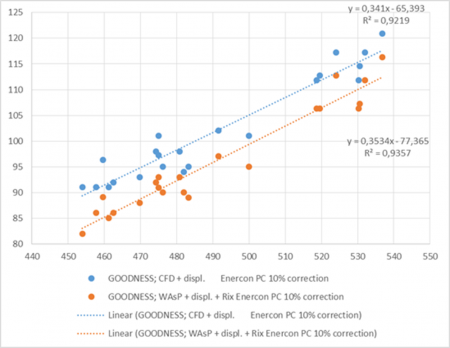Schwächen des WAsP-Orographiemodells (Englisch)
Zur deutschen Hauptseite | Alle deutschsprachigen Seiten
Elevation model pitfalls
Based on many post construction evaluations, some trends are seen when performing a calculation in elevated terrain. The two major issues are:
- In less steep terrain, higher elevated turbines are under predicted by the WAsP model relative to lower elevated turbines. With WAsP-CFD, similar results are seen, although there is some improvement.
- In steep terrain (>30% slopes) higher elevated turbines are over predicted by the WAsP model relative to lower elevated turbines. The RIX correction can partially repair this problem, however, the WAsP-CFD, or other CFD models, would be a better choice than the WAsP model in this scenario.
Ratio measured/calculated for a site in Germany with elevation differences
Above is an example from a German site with turbines in elevation from 133m to 157m. A very clear trend is seen in that the turbines with lower elevation are over predicted relative to the turbines with higher elevation - almost 7% per 10m elevation difference. Based on more internal calculation examples, the value varies from 3- 7% per 10m. This has high importance when having reference turbines with different elevations relative to the new project to be calculated.
Example as in previous figure, but including WAsP CFD calculation
Above is another example, where WAsP-CFD is tested as an alternative to WAsP. For WAsP with Rix, a ratio of 3.5% per 10m is shown. This ratio is lowered to 3.4% per 10m when based on WAsP-CFD – almost no improvement.
For complex terrain (large steepness), see the WAsP-CFD validation paper on the EMD help desk website.

